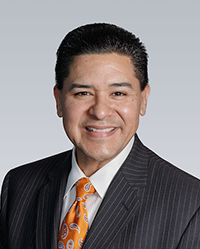Former Houston ISD superintendent Richard Carranza’s resignation from the district involved no financial settlements, and the two sides agreed not to sue each other following the separation, according to documents obtained by the Houston Chronicle.
A written agreement between Carranza and HISD board members shows a clean break after Carranza announced in early March that he planned to become chancellor of New York City public schools. Carranza officially resigned on March 31 and started his job in New York City on April 2. HISD board members have appointed Grenita Lathan, who previously served as the district’s chief academic officer, to serve indefinitely as interim superintendent.
Carranza’s three-year contract ran through August 2019, leading to questions about whether he would face any repercussions for resigning midway through that term. His contract didn’t include any penalties for resigning before August 2019, and it did stipulate both sides could mutually agree to end the agreement.
Carranza was paid his regular salary of $345,000 and benefits through March 31. He was allowed to take accrued but unused personal days through the last week of his employment.
[…]
Trustees have given no timetable for hiring a permanent superintendent. District officials on Wednesday named an interim chief academic officer, Noelia Longoria, to fill Lathan’s position. Longoria previously served as assistant superintendent of HISD’s Office of School Choice.
No drama is fine by me, and the terms are boringly normal. May it be this easy finding the right candidate to replace Carranza.
On a side note, the Chron editorial board calls for a change in how HISD trustees are elected.
One significant change that Houston ISD should consider is changing the way it elects school board members. Currently, the nine trustees are elected from single-member districts, rather than by voters from throughout the school district.
Texas law allows a couple of alternatives. One would be a board made up of a mix of single-member and at-large trustees. This is similar to how Houston’s City Council is elected. Sixty smaller school districts across Texas use this governance system, according to the Texas Association of School Boards.
Another alternative would be to switch to cumulative voting, where voters across the school district would be allowed to cast as many votes as there are candidates. This option has been available to Texas school districts since 1995 and is used by a number of smaller school districts for at-large trustee elections.
Changing the governance model could help address one of the biggest challenges facing the school board: Members are concerned about struggling campuses in their own electoral district, but not necessarily in the districts of other trustees.
Single-member districts have played a major role in assuring more diversity on school boards. They help ensure that multiple voices are heard in the development of education policy. But they also can result in a balkanized school district, with trustees focused on their individual parts rather than the whole.
The Chron notes that this “balkanization” was one of the reasons Rep. Harold Dutton pushed through HB 1842, the bill that now has HISD under the gun for the chronically low-performing schools. I’m kind of meh on this idea. I suppose a hybrid district/at large model would be all right, though I’d like someone to try to persuade me that At Large Council members are better at looking out for the interests of the entire city than the district members are (and I say that as someone who supports having At Large council members). I’m not convinced we need to change to do a better job of achieving our goals, but I’ll listen if you want to make a pitch. Campos has more.

